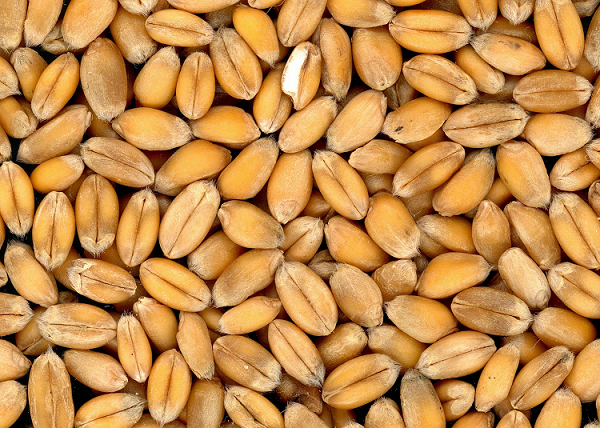MMN May 2024 – Straights Update
9 May 2024UK Cereals Market Update and Global Impacts
Spring UK Cereal Supply and Demand Estimates (AHDB) show well above average end of season stocks for wheat and barley. Despite 2023’s production being down 10% and 6% respectively, imports are up over 40% for both crops and exports are down considerably (83% and 36% respectively). Reduced availability of oats, combined with average exports, leads to the smallest ending stocks of oats forecast since 2011/12 (note to growers). The impact of the UK’s second wettest August through February since 1837 (when records began) is clearly shown in the latest crop condition report (Table 1). Information collected up to the end of March shows just 34% of UK winter wheat, 38% of winter barley and 37% of winter oats in a good or excellent condition and similarly, less than a third of all oilseed rape. These ratings are sharply lower than last year and below even March 2020’s levels.
Table 1. Crop condition for winter sown crops
| Crop | Very Poor | Poor | Fair | Good | Excellent |
|---|---|---|---|---|---|
| Wheat | 17% | 23% | 26% | 25% | 9% |
| Barley | 15% | 21% | 25% | 26% | 12% |
| Oats | 15% | 20% | 28% | 26% | 11% |
| OSR | 18% | 25% | 27% | 25% | 6% |
Source: AHDB
Similarly, many European crops have been continually impacted by unfavourable wet conditions across the key production regions with reports last week (end of April/start of May) that the state of French soft wheat is the poorest since 2020, with 61% of crops rated good or excellent, down from 97% last season. The spring barley area remains uncertain, and despite an increase being expected due to a lack of winter cropping, current weather leaves doubts over the size of the crop in the ground.
Spring barley planting here in Scotland has progressed well. Surface drying belies the wetter conditions beneath and creating sufficient tilth for good seed coverage has proved troublesome on heavier soils. Reports of having to re-drill earlier sown barleys, lost to surface capping, are also concerning.
The London feed wheat futures have risen considerably over the past few weeks to regain value lost since January. The market has surged by £30/t on the Nov 24 LIFFE since early March. UK feed wheat futures (May-24) are currently at £190.60/t. The Nov-24 contract gained over the same period too, currently at £214.60/t, which means that the price premium between May and November (old and new crop) has moved from parity six months ago, to £25/t currently. The recent bullish market temperament comes from dry conditions reported both in Russia and US states coupled with ongoing Black Sea tensions prompting investment funds to cover short positions.
Following a strong pace over the autumn/winter period for UK oat exports, movements appear to have slowed slightly. According to HMRC, imports of oats this season to date (Jul – Feb) totalled 94.2 Kt. This sits 48% above the five-year average (63.8 Kt) for this period, but 27% below the same point last season (128.6 Kt). Exports to the EU totalled 86.2 Kt this season so far (Jul – Feb). The main destinations for oat exports were Belgium (37.8 Kt), Spain (19.8 Kt) and the Netherlands (15.4 Kt).
Lower supplies of rapeseed are expected in Europe for harvest 2024, (down 8%) which is putting greater reliance on Ukrainian rapeseed supplies this summer (although anticipated down 9%) and on Australian rapeseed supplies at the end of 2024 coming to the market. UK planted area is estimated now to be down 37% this year. Prices will also be helped if the rumours are true of the EU applying 50% import tax on Russian oilseeds and its products.
Table 2. Ex farm Scotland cereal prices
| £/tonne | May 24 | Harvest 24 | Nov 24 |
|---|---|---|---|
| Wheat | 200 | 205 | 215 |
| Feed Barley | 175 | 185 | 190 |
| Malt. dist. Barley | 240 | 245 | |
| Milling Oats | 271 | ||
| OSR* | 370 | 370 | 385 |
*Delivered Dundee
Sources – AHDB, United oilseeds
mark.bowsher-gibbs@sac.co.uk; 0131 603 7533
Sign up to the FAS newsletter
Receive updates on news, events and publications from Scotland’s Farm Advisory Service

